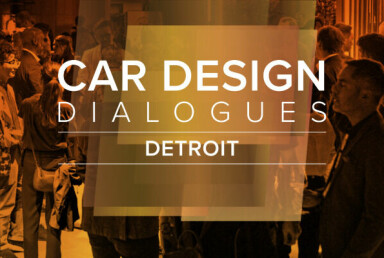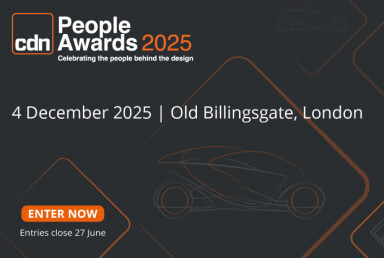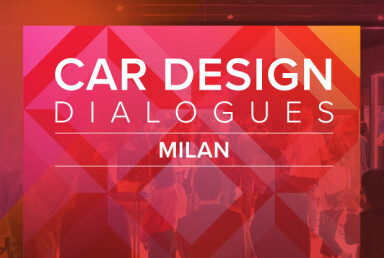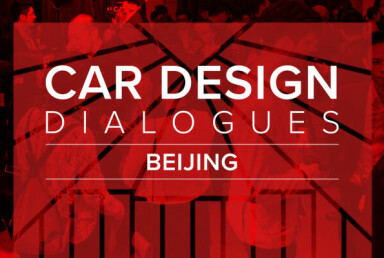
The Designers Pt 5: Pratap Bose, Tata
Tata’s head of design talks us through the challenges facing car design in the coming years
“2015 was the year the traditional car industry struggled to keep pace…”
Google, Faraday and Tesla had a much bolder approach to car design and looking at cars in general. Obviously we’re transitioning as an industry into lots of new technologies. We saw electric vehicles, connectivity and autonomous driving developing in a big way last year. While most of the traditional car industry was perfecting shut gaps and stuff like that, the non-traditional car industry arrived with something very refreshing. I think that caught a lot of the traditional car manufacturers off-guard.

Exterior render of the Hexa SUV concept
I was amazed to see the number of Teslas on the road in Holland recently. I don’t think anyone could have foreseen that. In the Netherlands electricity production is also carbon-neutral, or zero-emission. Even the energy producer who charges the battery is green – the whole system is phenomenal. There are some really big questions those guys tackled and answered. They went in without fear. The second round of design from them is still to come.
I think the first round from Tesla and others was to establish themselves as brands but I think they’ll accelerate really fast as they’re not bound by brand heritage and have more design freedom. I’m not saying there weren’t EVs before Tesla, but their electric focus just made them cool in a very non-car-like way. I think they’ve got a lot of people thinking about mobility in the same way they think about phone connectivity. They just made that big leap. I don’t think their work is done in terms of design, you can sit and talk about lines moving up and down, but I think they’re really tackling the big picture much more strongly and head-on than most traditional car manufacturers.

Sketches of a new Tata small car
Two things will happen next. First, the rest of the industry will try to catch up and those that have broken away – the Teslas, the Faradays – will accelerate even faster in terms of design. For example, take the piece of glass that goes over the roof of the Model X. If you ask any normal manufacturer and their engineering teams they’ll all tell you it’s impossible to make and put in a car, yet these guys have done it. Regulations are the same, but the mindset is different.
Second, the powertrain advantage has been taken away because it’s electric. Apple doesn’t make anything in its phone and it’s the same with these guys. You can buy off-the-shelf technologies, put them together, and make that car. They’ve done it really quickly and I think that’s really interesting.
Concepts are getting repetitive because carmakers are still thinking in a traditional way. New models of ownership – I think that people are going to give up buying cars completely – will be about mobility when you want it. The day is not far off when you’ll be able to select a body type and the car will drive to you autonomously and arrive outside your door. For the weekend you might want a minivan, for the week you might want something else.

Interior render of the Nexa SUV
Great surfacing and finessing are fine but I didn’t see a vision of a complete system in recent concept cars – it’s a thing I feel is lacking. They’re very well executed, sure, everything has reached that level where you don’t argue about the design execution, the resolution of surfaces, the details, proportion, all of that is great. But what happens if you take that car and place it in another world.
I think in the boardroom at Kodak, they would have looked at digital photography in a very similar way, ‘How many digital cameras have they sold?’ But then it grows exponentially and catches you out. It’s easy to say ‘Oh Tesla only sold 500 cars,’ or whatever, but it can rapidly accelerate.
The ownership issue will affect the way we look at cars. And the emergence of Uber – and in India there’s a brand called Ola – these all work on the same model. I foresee the day when we’ll be designing cars for an Ola or an Uber. They will be the customer. If they continue to expand at the current rate they could order hundreds of thousands each year. I think that shift will start soon.

Tata’s new small car
It would be interesting in our case to think of what a shared mobility product in India will be like. We’ve got material constraints and cost and use issues though. Would you want to get into a car that someone else has driven? There are some sociological questions to start delving into. That will lead to another set of challenges we haven’t thought about.
For myself, and our team, I really want to use 2016 to start thinking about that, because we need to break away from our traditional models of thinking about cars and design. So I’m really excited about some of these questions. Though they may not be easy ones to answer.




